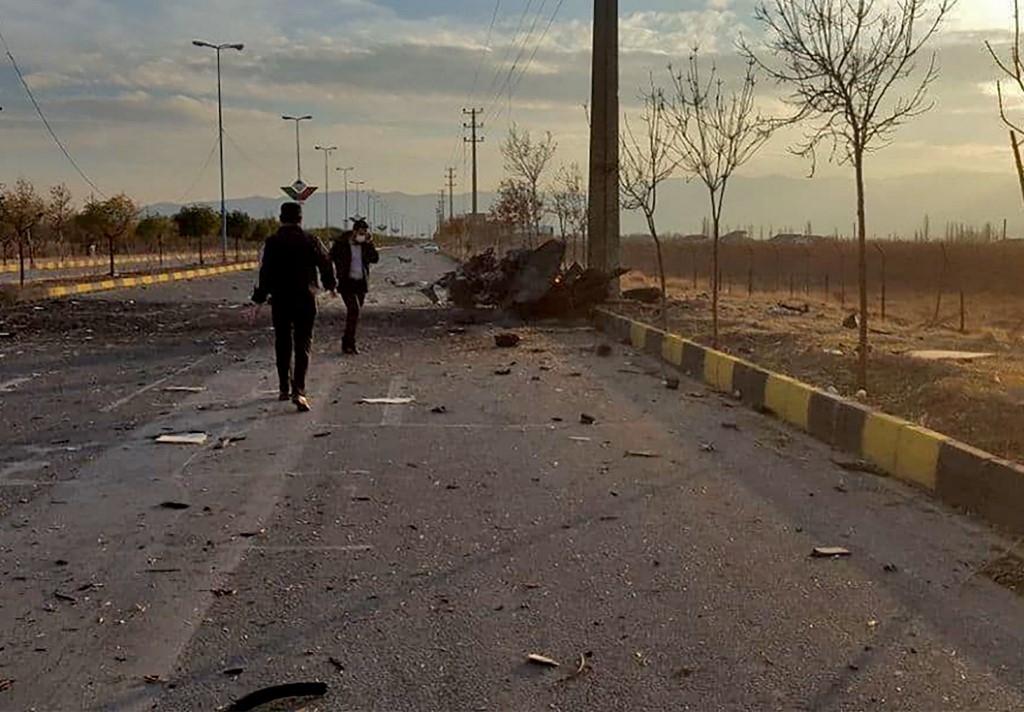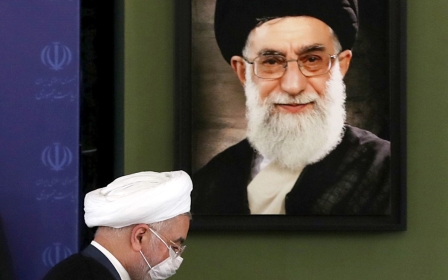Five scientists in 10 years: Iran's nuclear physicists are top targets for assassins

To be a nuclear scientist in Iran is to be in danger. During the past decade, up to this week, at least four had been killed in vehicle bombings and shootouts, and several others have been targeted but survived.
On Friday, the alleged architect of Iran's military nuclear programme joined the ranks of the slain. Armed assassins gunned down Mohsen Fakhrizadeh in his car in an ambush in Absard city, outside the capital Tehran.
New MEE newsletter: Jerusalem Dispatch
Sign up to get the latest insights and analysis on Israel-Palestine, alongside Turkey Unpacked and other MEE newsletters
Fakhrizadeh, an officer in Iran's Islamic Revolutionary Guards Corps (IRGC), has been known as one of Iran's most celebrated physicists because of his work on the country's nuclear programme, Project 111.
When his colleague, Majid Shahriari, was assassinated in 2010, the UN described Fakhrizadeh as a leader in Tehran's effort to acquire a nuclear warhead.
Details of Friday's attack remain unclear, but Hossein Salami, head of the country's Republican Guards, has accused those who targeted Fakhrizadeh of working to block Iran "from gaining access to modern science".
There is a long history of world powers killing scientists as a form of warfare; from World War II to the Cold War, physicists and engineers have been known to turn the tide of military capabilities, making them prime targets.
Iran has blamed Israel and the United States for past assassinations of its scientists, though both countries have denied involvement.
Masoud Alimohammadi
Masoud Alimohammadi, a professor of particle physics at the University of Tehran, was killed in January 2010 by an apparent remote-controlled bomb that had been attached to his motorcycle.
At the time, Iranian government authorities, as well as his university colleagues, swore that Alimohammadi, described as "apolitical," had nothing to do with the country's nuclear programme.
"He was a well-known professor but was not politically active," Ali Moghari, director of the science department of Tehran University was quoted as saying at the time.
The year before his assassination, however, Alimohammadi had signed a letter - along with hundreds of others - expressing support for the main opposition candidate, former prime minister Mir Hussein Mousavi, in that year's presidential elections.
Still, following his death, Iranian authorities branded Alimohammadi a government loyalist and arrested several suspects in his killing, accusing them of working for the Israeli intelligence service.
Majid Shahriari
Eleven months later, Majid Shahriari, a scientist who managed a "major project" for the country's Atomic Energy Organization (AEO), was also killed.
A motorcycle driver reportedly pulled up to Shahriari's car and attached a bomb, killing him in the explosion. His wife and driver were wounded but survived.
Then-president Mahmoud Ahmadinejad said the attack was "undoubtedly the hand of the Zionist regime" and western governments. Both the US and Israel denied involvement.
His colleague, Fereydoon Abbasi, was wounded in a similar attack on the same day but survived after being rushed to hospital. Abbasi was the head of the AEO at the time and was sanctioned by the UN Security Council.
The UN had described Abbasi as a senior scientist in the Ministry of Defence who had been "working closely" with Fakhrizadeh.
Meanwhile, Iran's nuclear programme also came under cyber-attack. At the time, Ahmadinejad admitted those intrusions had been successful in "creating problems for a limited number of... centrifuges with the software".
Darioush Rezaeinejad
Darioush Rezaeinejad became the next Iranian scientist to meet a bloody fate in July 2011. Two gunmen riding motorcycles fatally shot Rezaeinejad one Saturday afternoon, wounding his wife in the attack.
A doctoral student at Khajeh Nasroldeen Toosi University, Rezaeinejad was thought to have been working on a nuclear detonator, and had, according to Israeli reports, been seen frequently entering a nuclear lab in northern Tehran.
Iranian authorities rejected such intelligence, painting Rezaeinejad as nothing more than an academic.
"The assassinated student was not involved in nuclear projects and had no connection to the nuclear issue," Iranian intelligence minister Heidar Moslehi was quoted as saying at the time.
Iran has long denied any desire to build a nuclear bomb, but western powers have insisted on its intentions to do so. Tensions in 2011 had been building, as the US, Israel and the European Union feared the country was getting close to succeeding in its alleged attempts to access fissionable material.
Mostafa Ahmadi Roshan
Less than a year later, in January 2012, Mostafa Ahmadi Roshan became the next assassination target.
Another motorcyclist was used in the killing of Roshan, riding up to his car and attaching a magnetic bomb that killed the scientist and his driver.
Roshan was a professor at a technical university in Tehran and a department supervisor at the Natanz uranium enrichment plant.
His death came a week after Iran's top nuclear official announced that production was about to start at the country's second major uranium enrichment site.
Two months earlier, the UN's nuclear watchdog had published a report alleging that Iranian scientists were engaging in secret and continuous efforts to construct a nuclear weapon.
The AEO released a statement warning that "America and Israel's heinous act will not change the course of the Iranian nation".
The United States condemned the killing and denied any responsibility, while Israel's military spokesman released a sort of non-denial denial in a statement on Facebook.
"I don't know who took revenge on the Iranian scientist," Brigadier-General Yoav Mordechai wrote. "But I am definitely not shedding a tear."
Quiet until Trump
That year, serious nuclear talks began between Iran and six world powers known as the P5+1 (China, France, Germany, Russia, the United Kingdom, and the United States).
The assassinations stopped, and negotiations - which had been sporadic in years past - picked up steam. In June 2013, Hasan Rouhani, a former nuclear negotiator, became president of Iran.
By September, the newly inaugurated leader took part in a phone call with then-US president Barack Obama, marking the highest level talks between Iran and the US since 1979.
Within four months, parts of the nuclear deal had been implemented, and, by July 2015, Iran and the P5+1 announced a comprehensive deal known as the Joint Comprehensive Plan of Action (JCPOA).
On 8 May 2018, US President Donald Trump withdrew the United States from the multilateral nuclear accord, reinstating a series of crippling sanctions against the country.
When Iran failed to garner enough European support to pressure the United States against its escalating "maximum pressure" sanctioning campaign, it began breaking terms of the deal, restarting some parts of its shuttered nuclear enrichment programme.
Tensions between the US and Iran have been heated ever since, several times coming to what many called "the brink of war," particularly when the Trump administration ordered the assassination of top Iranian general Qassem Soleimani in January this year.
President-elect Joe Biden, who worked on the Obama-era negotiations, has expressed willingness to restart talks with Iran, but concern has been growing over the outgoing president's plans for Iran and its uranium enrichment facilities during his final weeks.
This article is available in French on Middle East Eye French edition.
Middle East Eye delivers independent and unrivalled coverage and analysis of the Middle East, North Africa and beyond. To learn more about republishing this content and the associated fees, please fill out this form. More about MEE can be found here.








